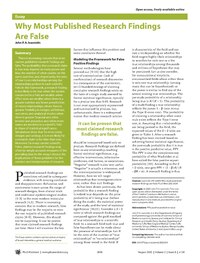
Photo from wikipedia
Background: Short versions of qualitative and quantitative food frequency questionnaires (FFQs) are widely used to assess usual food intake. However, fewer studies evaluated their relative validity and reproducibility in the… Click to show full abstract
Background: Short versions of qualitative and quantitative food frequency questionnaires (FFQs) are widely used to assess usual food intake. However, fewer studies evaluated their relative validity and reproducibility in the Chinese population. Methods: This study compared 12-day 24-h dietary recalls with qualitative and quantitative FFQs designed by the China Kadoorie Biobank (CKB) study to assess the relative validity. Two FFQs were administered in the second and third seasons and compared to evaluate the reproducibility. Statistical tests included Spearman correlation coefficients, weighted kappa, and cross-classification. Results: A total of 432 participants were eligible after stratifying by age, sex, and four regions. In the validation of qualitative FFQ, adjusted Spearman coefficients were between 0.23 and 0.59, and weighted kappa coefficients ranged from 0.61 to 0.88, except for fresh vegetables. The percentage of correct classification was highest in fresh vegetables and lowest in fresh fruit, but the percentages of extreme classification were below 3.0%. Corresponding Spearman and kappa coefficients for the reproducibility were 0.17–0.56 and 0.62–0.90. Furthermore, the correct classification constituted between 35.6 and 93.3% of all participants. Regarding the relative validity of the quantitative FFQ, Spearman coefficients ranged from 0.14 to 0.69 in addition to dried vegetables and carbonated soft drinks. For items with more than two-thirds of total participants consumed, weighted kappa coefficients were from 0.57 to 0.79; correct classification percentages were between 34.6% and 67.5%. Spearman and kappa coefficients for the reproducibility of the quantitative FFQ were 0.15–0.71 and 0.60–0.86, respectively; correct classification percentages varied from 47.8% to 71.6%. Conclusion: Most food items from the qualitative FFQ showed acceptable or even good relative validity and reproducibility in the CKB study. Likewise, major food items in the quantitative FFQ were valid and reproducible, but poor performances of dried vegetables and carbonated soft drinks indicated the need for modification and validation in future research.
Journal Title: Nutrients
Year Published: 2022
Link to full text (if available)
Share on Social Media: Sign Up to like & get
recommendations!